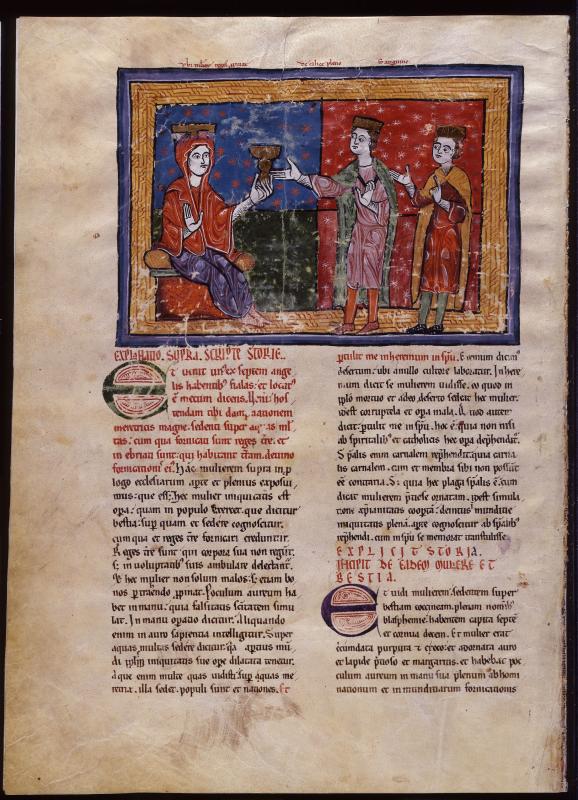
Commentary on the Apocalypse and commentary on the Book of Daniel
Purchased by J. Pierpont Morgan (1837-1913) in 1910
Apocalypse: Scarlet Woman on Waters (Revelation 17:1-2) -- Scarlet Woman crowned, seated on cushioned bench, giving goblet to one of two crowned kings; starred background; inscription on top of frame, UBI MULIER REGES PROPINAT DE CALICE PLENO SANGUINE.
And one of the seven angels who held the seven bowls approached and spoke with me, saying: "Come, I will show you the condemnation of the great harlot, who sits upon many waters. With her, the kings of the earth have fornicated. And those who inhabit the earth have been inebriated by the wine of her prostitution." (Rev. 17:1–2)
Babylon is a metaphor for the sin city of its day, which has made the kings fall into vice. The whore's cup contains the abominations and impurities of her fornication; she hands the cup to a king who fingers the cord of his garment with the gesture of a courtesan.
